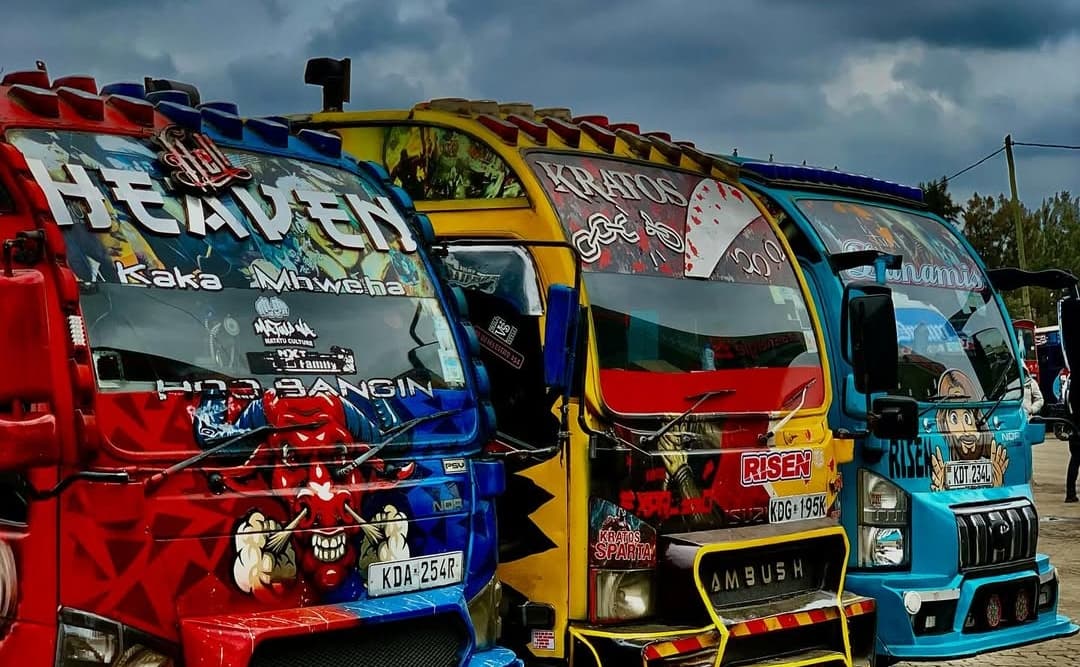We're loading the full news article for you. This includes the article content, images, author information, and related articles.
Beyond the vibrant graffiti and booming sound systems, Nairobi's iconic 'Nganya' matatus drive a multi-billion shilling economy and serve as a vital cultural hub for Gen Z. However, this unregulated creativity exists in a tense standoff with public safety

NAIROBI, Kenya - Every day on the streets of Nairobi, they are unmissable: minibuses adorned with dazzling graffiti, pulsating with music, and equipped with screens and Wi-Fi. Known as 'Nganyas', these are not just public service vehicles; they are a cultural phenomenon, a significant economic driver, and a source of growing concern for transport regulators. For many young Kenyans, particularly Gen Z, these vehicles offer more than just a ride—they provide a sense of identity, community, and daily excitement.
The matatu industry is a cornerstone of Kenya's economy. According to the Kenya National Bureau of Statistics (KNBS), the sector generates over KES 250 billion in annual revenue, with an estimated 70% of Kenyans relying on its services for daily commuting. The industry is also a massive employer, creating jobs for drivers, conductors (known as 'makangas'), artists, mechanics, and a wide array of support staff. This economic significance traces back to 1973, when a presidential decree by Jomo Kenyatta legalized their operation to meet rising public transport demand and foster indigenous entrepreneurship.
The term 'Nganya'—Sheng slang for a pimped-out matatu—describes a multi-million shilling investment. Owners can spend anywhere from KES 150,000 to over KES 1.5 million on modifications alone, including intricate paint jobs, powerful sound systems, and interior lighting. This fierce competition for the most attractive vehicle is a direct appeal to the youth, who often wait for their favourite Nganya, turning daily commutes into a cultural experience. This has given rise to a unique subculture, complete with annual awards like the Nganya Awards to celebrate the best designs and crews.
For many young Nairobians, the Nganya is a space of temporary escape and self-expression. The loud music, flashy visuals, and sense of community offer a stark contrast to the pressures of urban life. It is this blend of transport, entertainment, and identity that has cemented the Nganya's place in the heart of Nairobi's youth culture.
The vibrant, often chaotic, nature of the matatu industry has long been a challenge for regulators. The most significant attempt to enforce order came in February 2004 with the introduction of the “Michuki Rules,” named after the then-Transport Minister, the late John Michuki. These regulations mandated speed governors set to 80km/h, seatbelts for all passengers, and standardized uniforms for crew. While initially met with resistance, the rules were credited with a significant, albeit temporary, reduction in road accidents.
In recent years, the National Transport and Safety Authority (NTSA) has renewed efforts to enforce compliance. In May 2025, the NTSA issued directives ordering a crackdown on unauthorized graffiti, tinted windows, and illegal modifications that obscure the vehicle's Sacco identification and designated route. The authority argues these modifications undermine safety, accountability, and public confidence. All matatus are required to operate under a registered Savings and Credit Co-operative (SACCO) to streamline management and enforce discipline.
Despite regulatory efforts, the matatu sector remains a significant contributor to road accidents. According to NTSA data, 3,397 people died in road crashes in the first nine months of 2025. Between January 1 and March 31, 2025, a total of 1,139 road fatalities were recorded across Kenya. While not all of these are directly attributable to matatus, the sector's reputation for reckless driving is a major public concern. A 2020 study noted that an estimated 35% of road traffic deaths in Nairobi occurred within 20 meters of matatu stages, highlighting issues of rogue driver behaviour and poor infrastructure design.
Furthermore, passenger safety within the vehicles is an ongoing issue. A 2016 GeoPoll survey revealed that 55% of Kenyans had experienced harassment from matatu crews, most commonly in the form of verbal abuse. A more recent study highlighted that 44% of harassment incidents reported by women on public transport occurred in minibus matatus.
The Nganya culture encapsulates a fundamental Nairobi paradox: a vibrant, entrepreneurial spirit pushing the boundaries of creative expression against the urgent need for order and safety on the roads. As the NTSA tightens its grip, the future of this iconic subculture hangs in the balance, caught between its economic importance, its cultural resonance with Gen Z, and the undeniable human cost of a chaotic transport system.
Keep the conversation in one place—threads here stay linked to the story and in the forums.
Other hot threads
E-sports and Gaming Community in Kenya
Active 7 months ago
Popular Recreational Activities Across Counties
Active 7 months ago
The Role of Technology in Modern Agriculture (AgriTech)
Active 7 months ago
Investing in Youth Sports Development Programs
Active 7 months ago